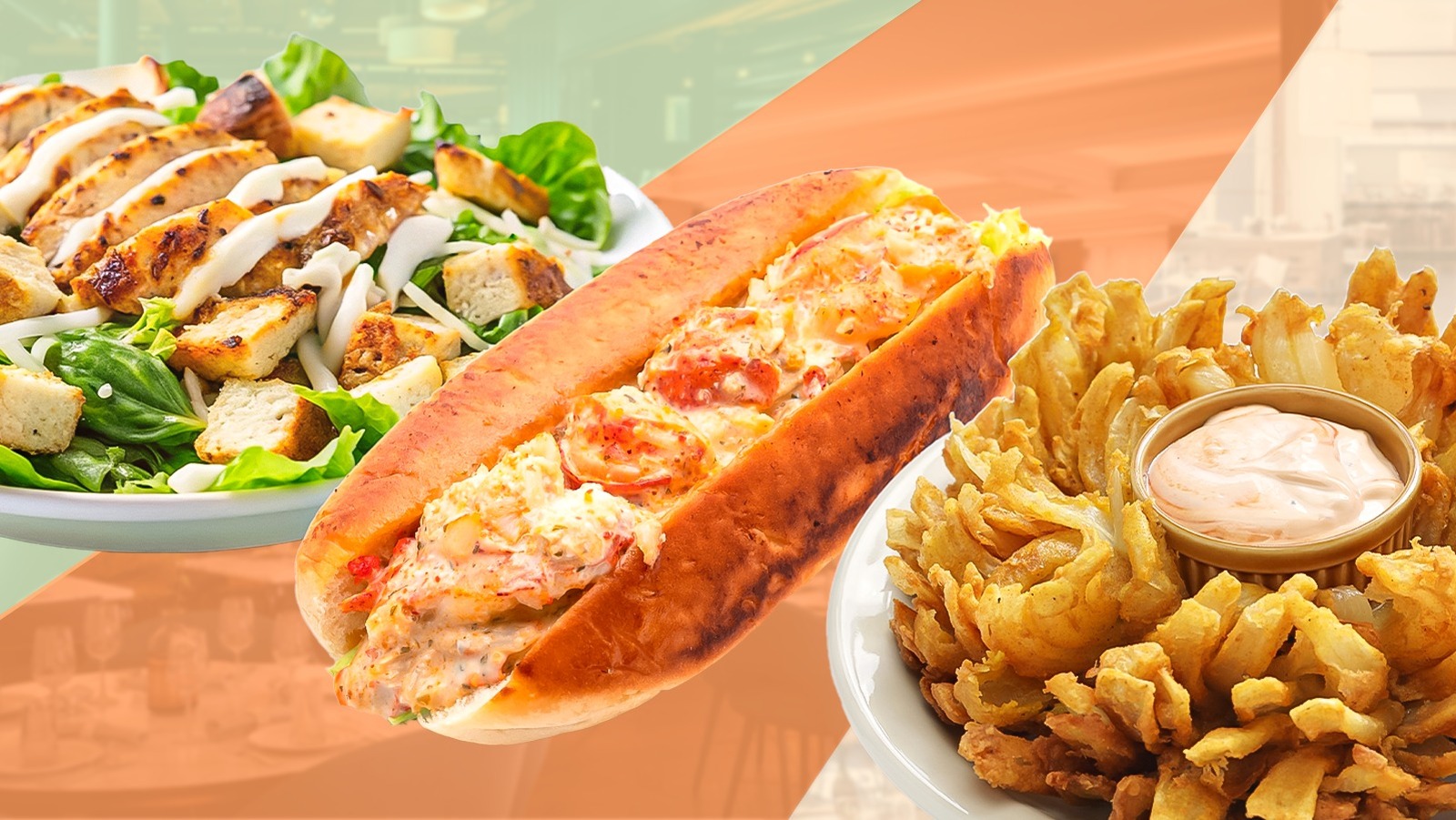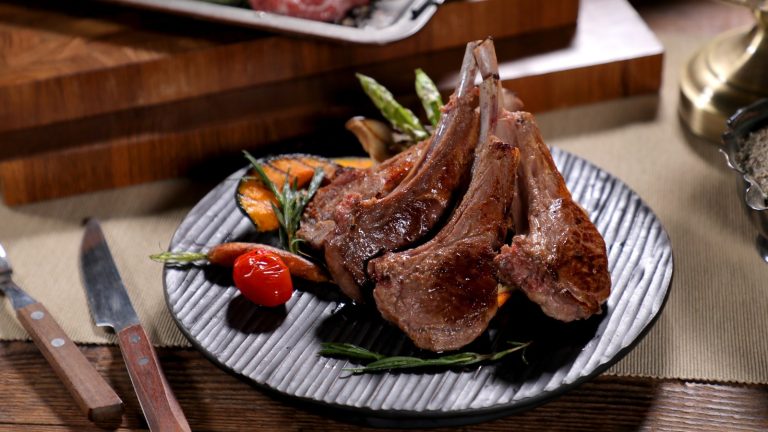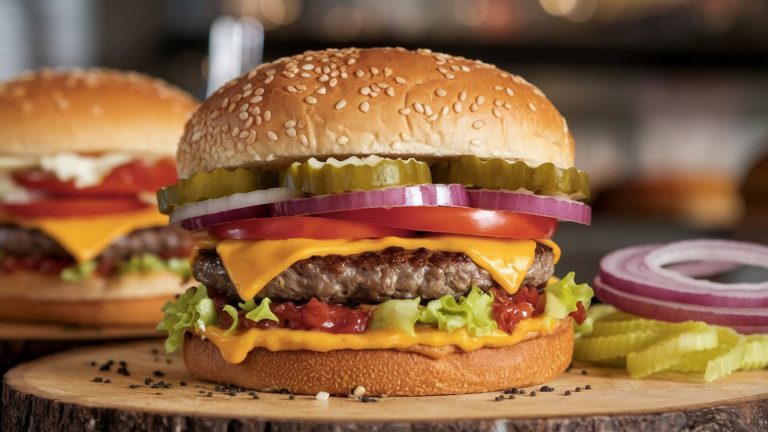Some of the spots where the most famous and influential foods, from American handhelds to decadent desserts, were made are still in operation today. The birthplaces of iconic dishes span the country and encompass different cuisines and dining categories. They include fine dining institutions that churned out hefty breakfast plates, hot dog stands that experimented with cornmeal batter, sleepy Canadian pizza parlors that piled tropical fruit on their pies, stressed service workers stuffed who meat between two slices of bread, and more. And that’s all just within the last 150 years or so.
The foods that have the biggest hold on our culture, not just in the United States but worldwide, come from the least expected eateries and corners of the planet. These inventive businesses prove that cooking really is an art form, and chefs are not bound by their address, the trends of their time, or the traditions they’re pressured to abide by. Inspiration can strike anywhere, as demonstrated by these restaurants that are the birthplaces of iconic dishes.
Perry’s Restaurant – lobster roll
Although lobster has long been enjoyed on the New England coast, the “Encyclopedia of American Food and Drink” states that the lobster roll “may well have originated” at Perry’s Restaurant in Connecticut. Owner Harry Perry was said to have made the seafood sandwich for regular diner Ted Haley in the 1920s. It was quickly a hit, and the Milford institution celebrated the success by proudly hanging a sign from 1927 to 1977 that read, “Home of the Famous Lobster Roll.”
The hot sandwich consists solely of lobster, warm butter, and a crusty bun. This method is designated the Connecticut-style lobster roll to differentiate it from the newer versions that have since emerged. For example, the Maine-style lobster roll is served cold and is essentially a seafood salad on bread. This sandwich, made with lobster, mayonnaise, herbs, and lemon juice, has murky origins. However, its mid-century emergence seems to coincide with both the establishment of interstate highways and the Maine Lobster Festival, both of which supported the state’s post-World War II tourism spike. Eyeing the potential business of wealthy cottage owners, the many lobster shacks that speckled Maine’s coastline began attracting hungry beach-goers with the cold, ready-made sandwiches.
This creamier style of the lobster roll caught on and is now considered one of the most iconic dishes in the United States. Maine-style is often what people imagine when they think of lobster rolls, even though it’s very different from the original, Connecticut-born sandwich. Perry’s Restaurant is now shuttered, but its impact on New England cuisine is worthy of remembrance.
Russell’s Marina Grill – blooming onion
Despite many people’s association of the blooming onion with Outback Steakhouse, the fried snack was not invented in Australia. In fact, like the Aussie-style chain restaurant, it’s a product of the American South.
The origins of the blooming onion go back to 1985 in New Orleans, Louisiana. Jeff Glowski, a chef at Russell’s Marina Grill, made the first blooming onion, per an interview conducted by MEL Magazine with Tim Gannon, one of the co-founders of Outback Steakhouse and a former collaborator of Glowski’s. The same year as his initial invention in the Big Easy, Mr. Glowski brought his recipe to Jo-Jo Ivory’s New Orleans Restaurant in New South Wales. A 1985 publication of The Sydney Morning Herald called the “Onion Mum” “a crisp-fried onion sculptured like a chrysanthemum.” So the blooming onion does have some ties to Australia after all — even before it was introduced at Outback Steakhouse.
After Outback’s founding in 1988, Mr. Gannon’s chain honored the invention’s origins for a time. Pictures of Outback Steakhouse menus going up through about 2005 credit the Bloomin’ Onion to Russell’s Marina Bay. Though some eateries claim that they invented this uber-popular appetizer contest this, there isn’t much evidence to support their claims.
Caesar’s Place – Caesar salad
A Caesar salad tends to evoke visions of an epic age of emperors and laurel-wearing philosophers; a Mediterranean landscape of arid hillsides and marble columns. However, the dish wasn’t invented in Italy or even named after Julius Caesar, the toga-wearing Roman who many believe is the salad’s namesake.
The Caesar salad was actually born in Tijuana, Mexico at a restaurant aptly named Caesar’s Place. When Prohibition in the United States kept Cesare Cardini, an Italian restaurateur, from serving alcoholic drinks at his San Diego eatery, he moved his business across the border to Mexico in 1924. He is the real Cesare behind Caesar salad, and threw together what he could on a busy night of service to create an insalata mista. The result was the original Caesar salad: romaine lettuce, lemon, Parmesan cheese, croutons, eggs, olive oil, and Worcestershire sauce.
Mr. Cardini went on to refine his recipe, eventually attaining a trademark for the Original Caesar Dressing. Today, it’s a tangy, garlicky salad that many know and love.
Toshi’s Teriyaki Grill – chicken teriyaki
For anyone who’s been to the vibrant streets of Seattle, it should come as no surprise that the Emerald City is the birthplace of some pretty popular eats. Among them is teriyaki, or rather, what Americans know as teriyaki. Although it’s widely known that the sauce has been around since the 1600s, when Japanese cooks were using it on seafood, Japanese immigrant Toshi Kasahara is credited with the contemporary inception of teriyaki.
In 1976, he started serving up meats marinated in the soy and mirin-based sauce in his Lower Queen Anne restaurant, Toshi’s Teriyaki Grill. Unlike the historic, though not widely eaten, teriyaki sauce from Japan, the modern teriyaki Kasahara concocted was thicker. This is a little different from Hawaiian-style teriyaki, which incorporates pineapple juice as a key flavor — soy sauce producer Kikkoman states that it started bottling its own Japanese-Hawaiian fusion teriyaki in 1961. While this is notably before Mr. Kasahara’s teriyaki landed in the Pacific Northwest food scene, it’s his Seattle-style teriyaki that most Americans think of when they think of the sauce.
Although many restaurants are now credited with popularizing teriyaki in Seattle, it seems that Mr. Kasahara made it first when he sold teriyaki-marinated meat skewers over rice with salad and tea on the side. Having served up these plates since the 1970s, Toshi’s Teriyaki Grill is honored as the originator of its namesake sauce. The restaurant’s website states that Mr. Kasahara is “widely regarded as the godfather of Seattle teriyaki.” Photos inside the Space Needle neighborhood spot are paired with plaques that share the sentiment. Today, it’s a mecca for teriyaki enthusiasts from around the world.
Louis’ Lunch – hamburger
Like the lobster roll, the hamburger is another beloved American sandwich that was invented in Connecticut. In the 1900s, Louis Lassen put a beef patty between two pieces of bread for impatient customers at his New Haven restaurant, Louis’ Lunch. It was an instant hit, and now hamburgers are made with all kinds of condiments, buns, and preparation methods.
That’s a tidy tale for a food that has many, many origin stories. Others across the United States and even beyond claim to be the inventors of this American staple, so the hamburger’s birthplace is widely debated. However, the Library of Congress attempted to put the theories to rest in 2000, when it honored Louis’ Lunch as the true inventor of the hamburger. The congressional record reads, “With a meat grinder and a streak of that infamous Yankee ingenuity, Louis changed the course of American culinary history, serving America’s first hamburger.” Perhaps the debate can be put to rest, since the United States government backs this historic Connecticut lunch spot’s claim to fame.
Delmonico’s – baked Alaska and eggs Benedict
New York’s Delmonico’s, which opened in 1837, is considered the first fine dining restaurant in the United States. The Manhattan gem is credited with inventing many iconic dishes, including baked Alaska and eggs Benedict.
The origin story of the baked Alaska dates back to 1867. Pastry chef Charles Ranhofer may have sought inspiration for the dessert from the United States’ purchase of Alaska that year. Eggs Benedict was also made by Mr. Ranhofer during that same decade. According to the restaurant, the kitchen was asked to make something special for LeGrand Benedict, a frequent diner who was craving something new. The nearby Waldorf Hotel also claims to have invented the breakfast dish for a guest, but it states that it was in 1894. Sources point to Delmonico’s first putting eggs Benedict on diners’ plates in either the 1860s or 1890s. The restaurant’s press team asserts it was the 1860s, and by 1894 Chef Ranhofer already published his cookbook, “The Epicurean,” which includes a recipe for “Eggs À La Benedick.” Perhaps it’s for this reason that Delmonico’s tends to get the credit for eggs Benedict.
Pat’s King of Steaks – Philly cheesesteak
As the name suggests, the Philly Cheesesteak was invented in Philadelphia, Pennsylvania. It’s widely accepted that although many restaurants around the city serve up their own versions of the sandwich today, it was the brainchild of Pat and Harry Olivieri — perhaps it’s appropriate that two brothers came up with the City of Brotherly Love’s most iconic dish. The Olivieri’s restaurant, Pat’s King of Steaks, is the birthplace of the Philly Cheesesteak.
Pat’s King of Steaks, located in the Italian Market, saw lots of foot traffic from factory workers and other pedestrians. Since they served reasonably priced and portable meals that filled the air with meaty scents, the brothers were well-positioned for hungry crowds. However, the South Philly hot dog stand tried something different in 1930, when Pat decided to shake things up and serve another kind of meat on bread. It quickly became a hit, and the rest is history.
While Pat’s King of Steaks is still in operation, there are lots of places around Philadelphia where visitors can find the best Philly cheesesteaks based on their own visions of the sandwich. But if you want to try the real deal and read about its origins on the historic plaque out front, head to Pat’s King of Steaks.
Satellite Family Restaurant – Hawaiian pizza
Unlike the Philly cheesesteak, Hawaiian pizza’s name doesn’t hint at its origins. In fact, the pineapple and ham pie was invented by a Greek immigrant living in Canada during the 1960s. Sam Panopoulos, the owner of Satellite Family Restaurant in Ontario, came up with the combination while he was experimenting with toppings.
The sweet and savory flavor profile was inspired by the work of the restaurant’s Chinese–Canadian cook at the time, who often paired sugary ingredients with salty flavors. As for the name, Mr. Panopoulos read the name of the pineapple can brand, “Hawaiian,” and decided to use that as the pizza’s title. Though customers were hesitant at first, they came to love the original pizza, so the pie stayed on the menu, where it remains to this day.
At this point, Hawaiian pizza is largely considered the most controversial pie worldwide. Icelandic President Guðni Th. Jóhannesson famously said that he would ban pineapple on pizza if he could, and according to YouGov surveys, Hawaiian is continually among Americans’ least favorite pizzas. Yet the biggest pizza chains in the world keep it on the menu. Fans of the dynamic flavor range from actors like Dwayne Johnson and, aptly, former Canadian Prime Minister Justin Trudeau, who’ve both frequently tweeted about their love of Hawaiian pizza. Whether you love it or hate it, you can’t help but admit it’s unique.
El Charro Café – chimichanga
The origin story of chimichangas is complicated, but most legends pin its founding region to either Arizona or Sonora, Mexico. The term “chimichanga” means “any trinket or trifle; something unimportant and whose true role or origin is not known legitimately,” according to 1959’s Diccionario de Mejicanismos. It could have been invented by Sonorans and brought to the United States. However, El Charro Café in Tucson is more often credited as the birthplace of the fried treat.
The story goes that in the 1950s, founder Monica Flin dropped a carefully wrapped burrito into the fryer by accident. Upset that her hard work was destroyed, she exclaimed, “chimichanga” — a close substitution for a Spanish curse word — as it fell. Ms. Flin pulled it out safely and decided to try the transformed burrito. Upon realizing it was delicious, she served it in her restaurant, and it quickly became a hit. It’s now considered a classic item in Tex-Mex cuisine.
Pronto Pup – corn dog
The birthplace of the corn dog is disputed, but many agree that the battered and fried hot dog concoction came from Oregon’s Pronto Pup, a Rockaway Beach staple. In true Pacific Northwest fashion, rain destroyed the stand’s hot dog buns on Labor Day in 1939. Versa and George Boyington decided to coat the sausages in a cornmeal-based batter and fry them so that they would not be forced to close their busy spot. They turned out to be a hit, and it was a whirlwind from there.
By 1941, Pronto Pup was selling its snacks commercially, and the couple trademarked their creation the next year. In 1947, attendees of the Minnesota State Fair were treated to Pronto Pups’ corn dogs for the first time. Today, events like these, not the rainy Oregonian coast, are what many diners picture when they think of enjoying corn dogs.
Shish Mahal – chicken tikka masala
Like so many foods on this list, chicken tikka masala has mysterious origins. Many mistakenly believe that the creamy, tomato-forward plate is from India. Some say it’s just an evolution of northern India’s butter chicken. But many credit Ali Ahmed Aslam, a Bangladeshi chef at Shish Mahal in Glasgow, the godfather of chicken tikka masala.
In the 1970s, Mr. Aslam attempted to tweak a tikka dish to better suit Western tastes. A customer complained that his chicken was dry and requested a sauce to go with it. The chef crafted a masala sauce from a can of tomato soup and spices as a solution. Chicken tikka masala, as his creamy and spiced creation was called, was embraced quickly and is among the most popular dishes in the United Kingdom today. Even beyond Britain, chicken tikka masala is considered a staple item in curry houses across the world.
Brennan’s – bananas Foster
The Big Easy is the birthplace of many iconic dishes, including bananas Foster. In 1951, chef Paul Blangé at Brennan’s on Bourbon Street wanted to honor a New Orleans Crime Commission member named Richard Foster with a dessert. One of the founding family members owned “Brennan’s Processed Potato Company,” and at the time, the produce company was overflowing with bananas. So the chef and Ella Brennan, the manager and a member of the family, were asked to incorporate the yellow tropical fruit into the celebratory treat.
The dessert, which uses bananas, brown sugar, rum, banana liqueur, butter, cinnamon, and vanilla ice cream, was called bananas Foster. Inspired by baked Alaska, the duo decided to have the tropical dessert flambéed at tables, creating a caramelized, sugary, and dramatic homage to Mr. Foster. It became a favorite in-house. Once Brennan’s started its “Breakfast At Brennan’s” offering, which presented bananas Foster as the signature sweet, it caught on locally and beyond.
Philippe The Original – French dip
Although its name is a nod to France, the French dip sandwich was invented in California in 1918 at Philippe The Original in Los Angeles. Another restaurant, Cole’s, also claims to be the birthplace of this famous dish, but unlike Philippe The Original, the business’s story doesn’t have historic documents or interviews from the time to back it up. For example, an interview conducted by the Los Angeles Times with founder Philippe Mathieu in 1951, features one of the many stories of how the French dip came to be.
While the tales have seemed to vary depending on who is telling them and when they were told, the most popular origin story of the French dip is that, like the chimichanga, the sandwich was the result of a happy accident. While finishing up an order for a police officer, Mr. Mathieu dropped a French roll into a pan filled with the roasting juices. When he told the customer about the slip-up, he said he’d still take it, juice and all. Apparently, he enjoyed it because the restaurant states that he came back the very next day with his friends, who all wanted to try the dipped sandwich.
Tojo’s – California roll
Adding to the Pacific Northwest’s legacy of creating iconic dishes, Tojo’s in Vancouver is credited with inventing multiple famous sushi rolls, including the California roll. In 1971, chef Hidekazu Tojo decided to flip a sushi roll inside out, putting the rice on the outside rather than the traditional seaweed, thinking that the sushi-hesitant Canadians would be more likely to go for something covered in rice than sea greens. He called them inside-out rolls. The crab, cucumber, and avocado treat that eventually became known as the California roll gained popularity in the United States.
Perhaps predictably, its title led to many believing that the roll was invented in its namesake state. Throughout the years, multiple Southern Californian chefs have stepped forward and claimed that their restaurants are actually the dish’s birthplace, so the origins of the California roll are hotly contested. But the debate shouldn’t be that complicated, as Japan, the nation responsible for sushi’s invention, recognizes Mr. Tojo as the true man behind the California roll. In 2016, the country honored the chef by appointing him as a goodwill ambassador for Japanese cuisine.
Tojo’s is now a fixture in Vancouver, and according to Japan, it is the birthplace of this iconic dish. For those who want to try the California roll where it was invented, this British Columbian business is a must-visit spot.





